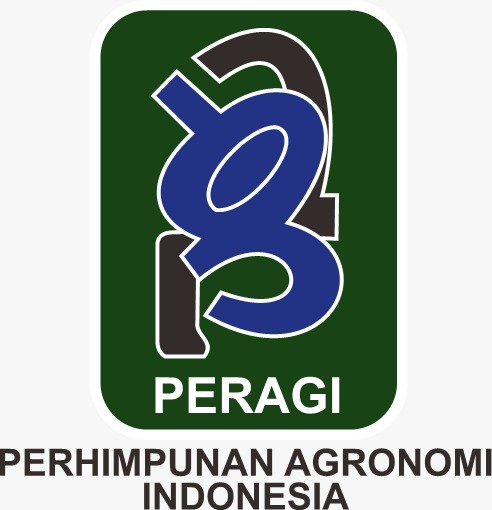Analysis of Soil Chemical Properties in Oil Palm Plantation Land Produces in Tebing Tinggi Pangkatan Village Sub-district of Pangkatan
Abstract
Oil palm (Elaeis guineensis) is a commercially significant plantation crop, primarily due to its production of crude palm oil (CPO), which finds applications in the food, cosmetics, and biofuel sectors. The fertility of the land is closely linked to the soil's chemical characteristics, including pH, nitrogen (N), phosphorus (P), potassium (K), organic carbon content, and cation exchange capacity (CEC). This study employed a field survey methodology, utilizing purposive sampling for data collection. Findings indicate that the soil in oil palm plantations exhibits an acidic pH range of 4.87 to 5.22 and a low organic carbon content between 0.90% and 1.05%, factors that may influence nutrient availability. While nitrogen levels (1.03% to 1.07%) and phosphorus concentrations (41.22 to 42.33 ppm) are relatively high, potassium levels (0.54 to 0.63 meq/100g) are low, potentially hindering plant growth. The cation exchange capacity, measured at 15.66 to 16.87 meq/100g, is categorized as moderate, suggesting that while the soil can retain nutrients adequately, enhancements in potassium availability are necessary.
Downloads
References
Baihaki, A., Zuraida, Z., & Ilyas, I. (2020). Perbandingan sifat kimia pada tanah hutan dan kebun kelapa sawit (Elaeis guineensis Jacq.) di Kecamatan Beutong Kabupaten Nagan Raya. Jurnal Ilmiah Mahasiswa Pertanian, 4(2), 434–445. https://doi.org/10.17969/jimfp.v4i2.11007
Lestari, W. (2020). Pengaruh ketinggian perangkap feromon dalam mengendalikan kumbang tanduk (Oryctes rhinoceros L.) di perkebunan PT Herfinta. Jurnal Agroplasma, 7(2), 80–84. https://doi.org/10.36987/agroplasma.v7i2.1846
Lubis, A. M. S., Fitra, H. S., Kamsia, S. D., & Hilwa, W. (2024). Evaluation of soil fertility status on oil palm cultivation land (Elaeis guineensis Jacq.) in Pulo Padang Village. Jurnal Agronomi Tanaman Tropika (Juatika, 6)(2). https://doi.org/10.36378/juatika.v6i2.3592
Pa, S. K., Peku Jawang, U., & Hubi Ndapamuri, M. (2023). Analisis status kesuburan tanah pada lahan di PT. Sumba Moelti Agriculture. Sandalwood Journal of Agribusiness and Agrotechnology, 1(1), 19. https://doi.org/10.58300/jts.v1i1.483
Rauf, A., Supriadi, S., Harahap, F. S., & Wicaksono, M. (2020). Karakteristik sifat fisika tanah Ultisol akibat pemberian biochar berbahan baku sisa tanaman kelapa sawit. Jurnal Solum, 17(2), 21–28. https://doi.org/10.25077/jsolum.17.2.21-28.2020
Syahrul, Thaha, A. R., & Toana, M. R. C. (2021). Analisis beberapa sifat kimia tanah pada berbagai tipe penggunaan lahan di Desa Tolai Barat Kecamatan Torue Kabupaten Parigi Moutong. Agrotekbis: E-Jurnal Ilmu Pertanian, 9(5), 1287–1297.
Syofiani, R., Diana Putri, S., & Karjunita, N. (2020). Karakteristik sifat tanah sebagai faktor penentu potensi pertanian di Nagari Silokek Kawasan Geopark Nasional. Jurnal Agrium, 17(1). https://doi.org/10.29103/agrium.v17i1.2349
Taufiq, M., Siswoyo, H., & Wws, A. (2013). Terhadap keseimbangan air hutan (studi kasus Sub DAS Landak, DAS Kapuas). Jurnal Teknik Pengairan, 4, 47–52.
Tewu, R. W. G., Theffie, K. L., & Pioh, D. D. (2016). Kajian sifat fisik dan kimia tanah pada tanah berpasir di Desa Noongan Kecamatan Langowan Barat. Cocos, 7(2), 1–8.
Walida, H., Harahap, F. S., Ritongah, Z., Yani, P., & Yana, R. F. (2020). Evaluasi status hara bahan organik terhadap sifat kimia tanah di lahan miring kelapa sawit. Ziraa’ah Majalah Ilmiah Pertanian, 45(3), 234. https://doi.org/10.31602/zmip.v45i3.3429
Copyright (c) 2025 Agung Muliana, Dini Hariyati Adam, Yusmaidar Sepriani, Yudi Triyanto

This work is licensed under a Creative Commons Attribution 4.0 International License.
Authors who publish with Jurnal Agronomi Tanaman Tropika (JUATIKA) agree to the following terms:
Authors retain copyright and grant the Jurnal Agronomi Tanaman Tropika (JUATIKA) right of first publication with the work simultaneously licensed under a Creative Commons Attribution License (CC BY 4.0) that allows others to share (copy and redistribute the material in any medium or format) and adapt (remix, transform, and build upon the material for any purpose, even commercially) with an acknowledgment of the work's authorship and initial publication in Jurnal Agronomi Tanaman Tropika (JUATIKA).
Authors are able to enter into separate, additional contractual arrangements for the non-exclusive distribution of the journal's published version of the work (e.g., post it to an institutional repository or publish it in a book), with an acknowledgment of its initial publication in Jurnal Agronomi Tanaman Tropika (JUATIKA). Authors are permitted and encouraged to post their work online (e.g., in institutional repositories or on their website) prior to and during the submission process, as it can lead to productive exchanges, as well as earlier and greater citation of published work.







 More Information
More Information



